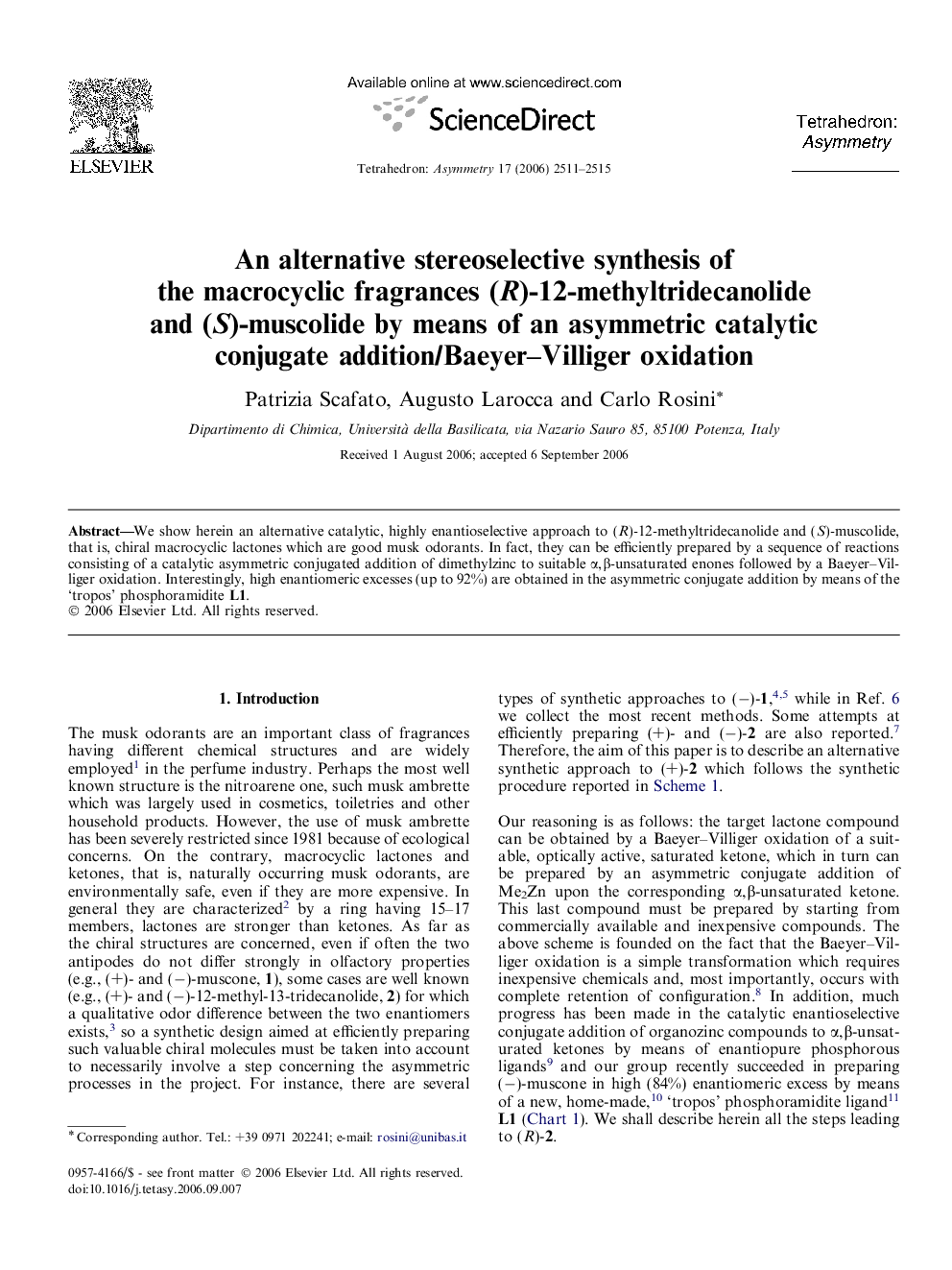| Article ID | Journal | Published Year | Pages | File Type |
|---|---|---|---|---|
| 1345740 | Tetrahedron: Asymmetry | 2006 | 5 Pages |
We show herein an alternative catalytic, highly enantioselective approach to (R)-12-methyltridecanolide and (S)-muscolide, that is, chiral macrocyclic lactones which are good musk odorants. In fact, they can be efficiently prepared by a sequence of reactions consisting of a catalytic asymmetric conjugated addition of dimethylzinc to suitable α,β-unsaturated enones followed by a Baeyer–Villiger oxidation. Interestingly, high enantiomeric excesses (up to 92%) are obtained in the asymmetric conjugate addition by means of the ‘tropos’ phosphoramidite L1.
Graphical abstractCompound (R)-2 is a natural constituent of angelica root oil (Archangelica officinalis Hoffm.).It’s possesses a musk note with a sandalwood tonality. [Kraft, P.; Frater G. Chirality, 2001, 13, 388–394].The precious macrocyclic fragrance (R)-2 has been obtained in good yield and high (92%) enantiomeric excess by asymmetric catalytic conjugate addition of dimethylzinc to the α,β-unsaturated ketone 4, followed by a regioselective Baeyer–Villiger oxidation of (R)-3. Using the same procedure the structurally similar fragrance (S)-muscolide has been obtained.Figure optionsDownload full-size imageDownload as PowerPoint slide
(R)-(−)-3-Methylcyclotridecan-1-oneC14H26O[α]D = −12.9 (c 0.7, CH3OH)Source of chirality: asymmetric conjugate additionAbsolute configuration: (R)
